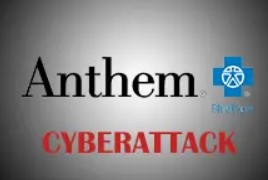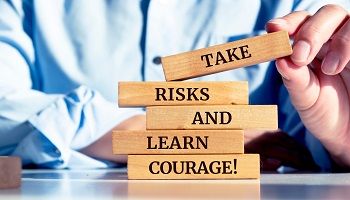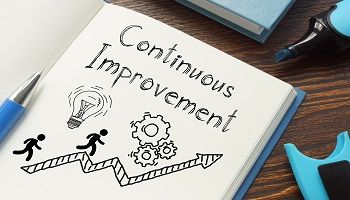Working Hard, But Not Too Hard!
Working hard is applying a high level of effort, being consistently focused, productive and effective, applying emotional, physical, and intellectual energy. Working hard is rewarding, it leads to personal and organizational success.
Some people say, “Work smarter, not harder.” But working hard is not the opposite of working smart. The two go together. Working smart makes working hard more effective. Working hard without working smart leads to working too hard.
Working “too hard” causes fatigue and burn out, it reduces performance, challenges relationships, creates a cycle of emotional reactions like anger and depression. Challenging work becomes too hard when it can’t be sustained. Sustained challenging work, physical or mental, requires sufficient reward, rest, relaxation, and recovery.
Subjectivity
What does it mean to work “too hard”? With two people doing the same work, one might find it too hard and the other too easy.
Some years ago, I managed a project that had a tight time deadline (don’t they all?). We were a core team of six people including myself, all in our late 20’s to early 30’s. For the last month of the project, we were working late into the night, coming in early in the morning, and occasionally doing all night work sessions. We had pretty much cut off our social and family connections for the duration. The work was engaging, state of the art, and creative. The reward was both financially, emotionally, and intellectually rewarding. Team members had bonded, and it often felt as if we were reading one another’s thoughts. We were in Flow. When the project ended, we were both ready for a rest and sad that it was over.
Some family members and friends thought we were working too hard. For us it was a thrilling ride. It’s very subjective. Observers may or may not have an accurate perception of how hard a worker is working in any role as a performer, manager, or executive.
Objective Criteria
We can bring some useful objectivity to the question of what working too hard means by defining the characteristic conditions of “too hard”, to overwork, really means.
Working too hard means there is imbalance among the factors – hours worked, rest and recovery, task complexity, competency, work environment, relationships, mental attitude, and physical condition.
Advertisement
[widget id=”custom_html-68″]
Symptoms
Overwork is a principal cause of burnout. In my article Burnout: What It Is and How to Avoid it,[1] I identified the symptoms of – “exhaustion, disengagement, and reduced effectiveness.
- Exhaustion is loss of energy and fatigue. It occurs when there is too much stress caused by unhealthy performance demands (chronic overwork). It can be a short-term experience following an intensive physical, emotional, or mental activity. Short-term exhaustion can be treated by moderating performance demands and taking rest and recovery time. If it goes untreated and becomes chronic, burnout follows.
- Disengagement is affected by a sense of not being cared for by leadership and of the futility of the work. People lose a psychological connection to their work. Involvement and enthusiasm suffer. Performers, whether executives, managers, or staff, just put in their time instead of being actively engaged in their work. self-worth suffers. They become cynical and either engage in unnecessary conflict or withdraw to avoid engaging in meaningful debates.
- Reduced effectiveness is tied to both exhaustion and lack of engagement. With tiredness, less involvement and enthusiasm, performers become less productive and less effective. That results in greater stress as performance goals become more difficult to achieve. Greater stress feeds exhaustion and lack of engagement.”
For observers, becoming disengaged with friends and family is perceived as a symptom of overwork. It may be, depending on how persistent it is, and whether overwork is the cause or work is being used as an escape from challenging relationships.
Symptoms are the most objective criteria available. It is up to each of us to be aware of our feelings and energy levels to decide if we are experiencing the symptoms of overwork.
Self-awareness
“Self-awareness is the ability to “step back” and observe yourself objectively to know your behavior, motivations, feelings, values, and desires. It is knowing your personality and the way you display it in your life.”[2]
Your self-awareness enables you to see whether you are working too hard and if you are, why you are doing it.
Doing Something About It
You can do three things about working too hard. 1) You can avoid it, 2) you can correct the imbalance among hours worked, rest and recovery, task complexity, competency, work environment, relationships, mental attitude, and physical condition to stop doing it, or 3) you can continue and suffer the consequences.
You avoid it by establishing a healthy work-life balance. You stop it by identifying the imbalance and correcting it by adjusting your attitude and behavior.
For example, you can balance rest and recovery with working on challenging work for long hours, and intensively. That kind of work is often necessary and can be sustained if there is time for rest and recovery.
A supportive work environment, with space for quiet time, and workspaces designed for the kind of work being performed to provide comfort and ease enables breaks and eliminates unnecessary stress.
Healthy relationships, including the ability to manage conflict and expectations, remove unnecessary stress and enable intensive effort.
Mental attitude is a key factor. If you believe you are working to hard, you will act as if you were. If you believe that you are working hard and are ok with it, you will be most effective.
If your personal situation is creating the imbalance because of workaholism or anxiety about not working hard enough, you are faced with the task of addressing these causes.
If your work situation does not give you the ability to improve imbalance, you are faced with the challenge of making the changes that will protect your health and effectiveness. That may mean taking the risks of standing up to your boss and changing jobs.
[1] https://www.projecttimes.com/articles/burnout-what-it-is-and-how-to-avoid-it/
[2] Pitagorsky, George, “Self-Awareness a Critical Capability for Project Managers”, https://www.projecttimes.com/articles/self-awareness-a-critical-capability-for-project-managers-d23/





